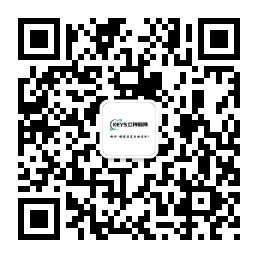Australian SAA Certification
The standards institution in Australia is the Standards Association of Australian, so many friends refer to the Australian certification as SAA certification. Electrical products entering the Australian market must comply with the SAA certification. There are mainly two types of SAA marks, one is the form approval mark, and the other is the standard mark. The form certification is only responsible for the sample, while the standard mark requires a factory inspection for each product. The scope of SAA certification mainly includes quality management systems, environmental management systems, occupational health and safety management, information security management. The cycle for applying for the Australian SAA certification for common products is 3-4 weeks. If the product quality does not meet the standards, the time may be extended. If the shipped products are not certified, the products will be detained, confiscated or a fine will be imposed.
SAA Certification - Overview
The standards institution in Australia is the Standards Association of Australian, so many friends call the Australian certification SAA certification. In fact, SAA is only a standards-setting institution and does not issue product certification certificates. Later, SAA was renamed Standards Australia Limited. SAA is an independent company and has no direct relationship with the government, but the federal government and state governments are among its members. SAA has signed a memorandum with the Australian federal government, recognizing SAA as the highest non-governmental standards organization in Australia. The memorandum also states that standard setting should be consistent with the requirements of the WTO. Therefore, there is an agreement that when appropriate international standards already exist, there is no need to develop new Australian standards. Australian standards begin with "AS", and the joint standards of Australia and New Zealand begin with "AS/NZS". The standards of Australia and New Zealand are basically consistent with those of the IEC, while there are also some national differences. Australia and New Zealand promote the unification of standards and mutual recognition of certifications. Products can be sold in one country as long as they have obtained the certification of the other country.
About SAA Certification
SAA is the certification that electrical products entering the Australian market must comply with local safety regulations, which is the certification that the industry often encounters. Due to the mutual recognition agreement between Australia and New Zealand, all products that have obtained Australian certification can smoothly enter the New Zealand market for sale. All electrical products need to undergo safety certification (SAA). There are mainly two types of SAA marks, one is the form approval mark, and the other is the standard mark. The form certification is only responsible for the sample, while the standard mark requires a factory inspection for each product. Currently, there are two ways to apply for SAA certification in China. One is through the conversion of a CB test report. If there is no CB test report, it can also be applied for directly.
SAA Certification Market
Australia and New Zealand are two countries with relatively sparse populations. Currently, the population is only 23 million, but the consumption capacity is very strong.
The SAA (Standards Association of Australia) that is commonly known is actually a standards research institute, which is in charge of the formulation and revision of standards. Electronic and electrical products entering Australia (including Australia and New Zealand) must pass this certification and have the certification certificate number marked on the products before they can legally enter the Australian market for sale.
SAA Certification - Certification/Supervision Institutions
Australia is a federal country, and the certification, control and management of electrical safety and energy consumption requirements are carried out by the monitoring departments (Regulatory Authority) of each state or region according to the certification procedures of their respective states/regions. Certificates issued by any state are equally valid in other states/regions without any additional procedures. In addition, QAS (Quality Assurance Services Pty Ltd.), a wholly-owned subsidiary of the SAA standards-setting institution, is Australia's NCB (National Certification Body), and the certificates issued by it are also recognized by each state or region and have the same effect.
The monitoring departments of each state or region in Australia:
1. Queensland Electrical Safety Office (DOIR) (Department of Industrial Relations)
2. Western Australia Technical and Safety Division (Office of Energy)
3. New South Wales Safety and Standards Branch (OFT) (Office of Fair Trading)---Former name (DOFT)
4. Energy Safe Victoria (ESV)---Former name (OCEI)
5. Office of the Tasmanian Energy Regulator
6. South Australia Energy Division
(Department of Mines and Energy)
7. Australian Capital Territory Regulation
(Department of Urban Services)
8. Northern Territory Power and Water Authority
9. SAI Global
In addition to the above monitoring departments of each state that can issue certificates, other private institutions such as SGS TCA can also be recognized by the government.
SAA Certification - Product Safety Certification
Australia does not have a unified safety certification mark, and each state or region has successively stipulated the management methods for electrical products in the form of legislation. Although the names and promulgation dates are not all the same, the contents of the electrical safety legislation in each state or region are basically the same. Electrical products are divided into prescribed products and non-prescribed products. Prescribed electrical products are classified according to AS/NZS4417.2, including electric heating equipment, refrigeration equipment, power tools, components, etc. The list is published in the government gazette and is increased according to the actual situation. Queensland, New South Wales and Victoria are the most active in the certification process. Taking Queensland as an example, the electricity Act 1994 announces the detailed regulations on the certification, sale and use of electrical appliances.
Prescribed electrical appliances: Prescribed electrical appliances are mandatory to obtain a certificate of approval issued by the monitoring department, and the marking is specified (the certificate number must be marked). It should be noted that the certification process is only for safety, not for performance or quality.
